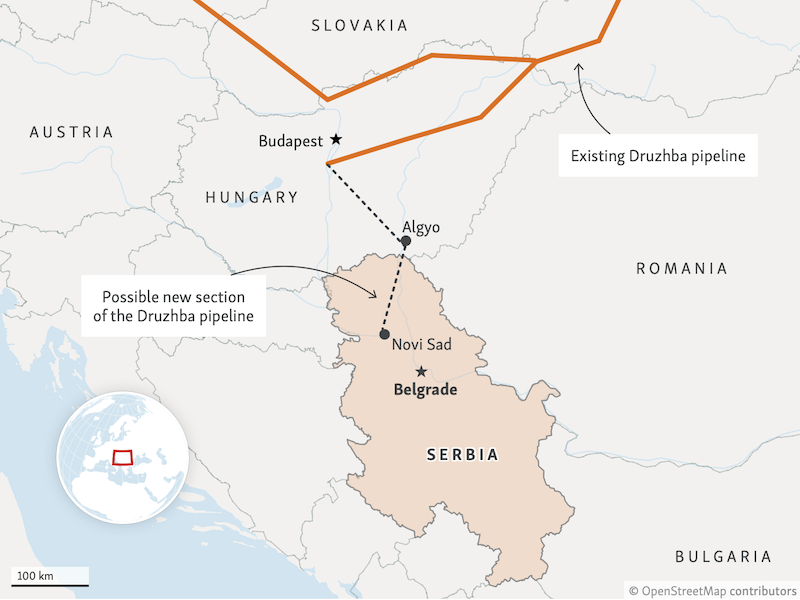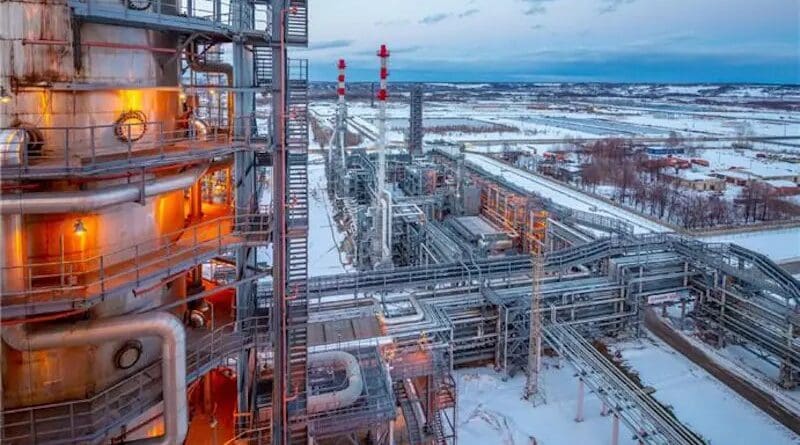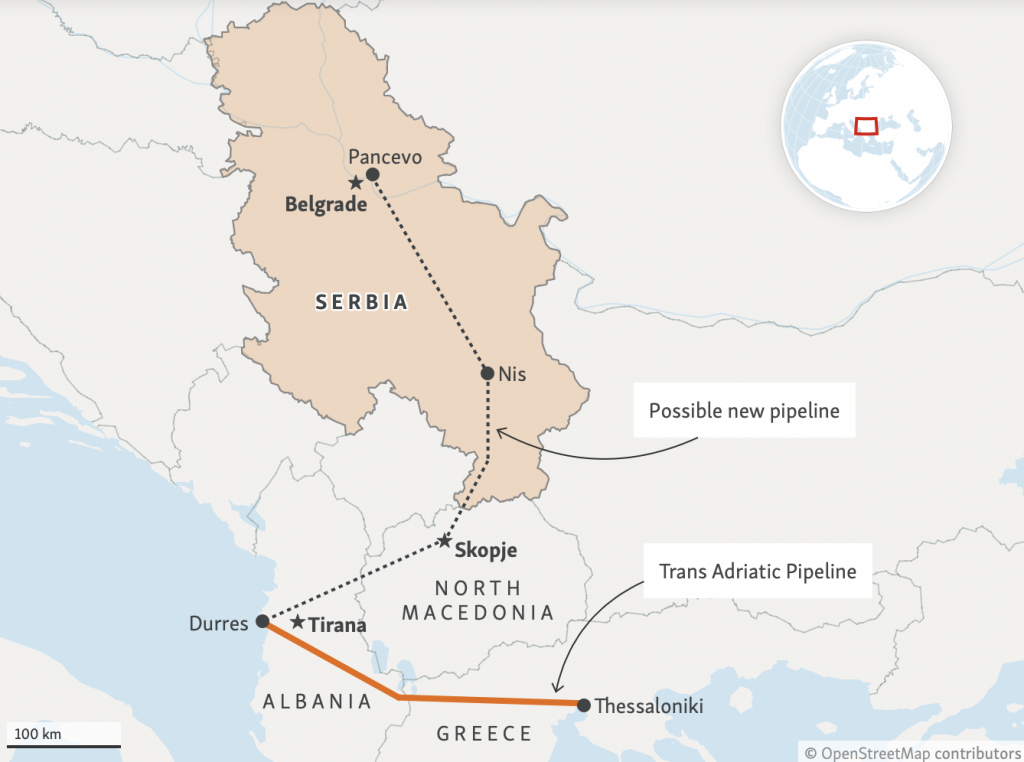Will New Pipelines Get Russian Oil To Serbia? – Analysis
By RFE RL
By Kristyna Foltynova
(RFE/RL) — In less than two months, the European Union is expected to cut about 90 percent of oil imports from Russia. The decision was announced back in May as a part of a sanctions package that was adopted in response to Moscow’s invasion of Ukraine. While Serbia has not joined these sanctions, this measure will likely have an impact on its oil supplies as well. Here’s a look at how they will be affected.
According to 2021 data, Serbia produces about 20 percent of the oil it needs and imports the rest (about 80 percent) — mostly from Iraq. Russia is the second biggest supplier, delivering almost one-quarter of the oil imported to Serbia.
Currently, Russian oil gets to Serbia via Croatia. It goes from the Omisalj Terminal to an oil refinery in Pancevo via the JANAF pipeline. However, the deliveries will likely stop as all seaborne oil imports to the EU (including Croatia) will be banned as of December 5.
How Does Russian Oil Get To Serbia?
Serbia receives its oil via the JANAF pipeline from Croatia. It is currently the only oil route available.
While tankers with Russian oil will no longer be allowed to deliver to the EU, the oil will probably still come to several European countries via Druzhba — one of the largest oil pipeline networks.
Germany and Poland are expected to stop buying Russian oil from the pipeline by the end of this year. However, Hungary, Slovakia, and the Czech Republic were given temporary exemptions for these deliveries so that they would have more time to cut their dependency on Russia.
As previously mentioned, Serbia is also dependent on Russian resources. Therefore, the country has recently intensified its energy cooperation with Hungary. In June for example, they signed an agreement, which provided Serbia with additional space for gas storage. Earlier this month, Hungary also said it was ready to help Serbia with gas supplies if needed.
Recently, the two countries decided to take their cooperation to another level. On October 10, Hungary and Serbia agreed to build a new pipeline segment that would ensure Russian oil deliveries to Serbia by connecting the country to the Druzhba pipeline.
Where Will Serbia Connect To The Druzba Oil Pipeline?
Serbia plans to connect to the Druzhba oil pipeline via its southern section, which passes through neighboring Hungary.

As an alternative, Serbia is considering building a pipeline that would pass through North Macedonia and Albania and connect to the existing Trans Adriatic pipeline.
The pipeline segment from Pancevo to Skopje would be about 400 kilometers long and another 300 kilometers would be needed to connect it from there to Durres. That would be much longer than the pipeline through Hungary (which is expected to be 128 kilometers long), but would allow for the further diversification of oil resources.
Alternative Pipeline To Serbia
Another option for Serbia is to build a pipeline through North Macedonia and Albania and to connect it to the Trans Adriatic Pipeline.
- Kristyna Foltynova is a data and visual journalist in RFE/RL’s Central Newsroom. She produces a wide variety of data-driven content, including infographics, animated videos, and interactive multimedia features. She is passionate about the topics of gender equality, climate change, and data privacy.



